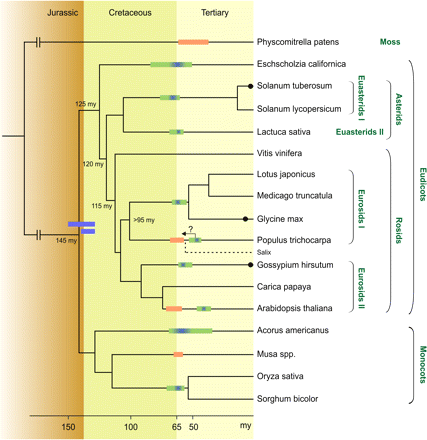Classification

Domain- Eukaryotic
Kingdom- Plantae
Phylum- Angiospermae
Class- Magnoliopsida
Order- Rhamnales
Family- Vitaceae
Genus- Vitis
Species- Vitis vinifera
http://www.henriettesherbal.com/pictures/index.html#fine-print
Eukaryotic: All organisms in this domain have membrane bound organelles and true nucleus.
Plantae: In this kingdom organism use photosynthesis to obtain their energy. Also they have structures chlorophyll and chloroplast that help in this process. These structures give the plant their green color. Plants also have cell walls that contain cellulose.
Angiospermae: In this phylum the plant is able to produce seeds, but it is also able to produce a flowing structure. The flowing structure could be either a flower or some sort of fruit like a berries. A more common name is the angiosperms. Angiosperms have the most complex reproductive system for plants.
Magnoliopsida: Organisms in this class are the dicots. Dicots sees usually have two emryonic leaves. Also the flowering parts in four or fives. Other magnoliopsida include Bertholletia excelsa, Catharanthus roseus, Viola sororia, and Salvia officinalis.
Rhamnales: Woody plants that include many different families including the grape family. These families include the Rhamnaceae, Leeaceae, and the Vitaceae.
Vitaceae: This family includes the grapevines and also the virgina creeper. Mostly contain shrubs and woody lianas that climb with their leaf opposed tendrils. Have simple leaves, unisexual flowers, soft berry fruits, and fused flowers that separate at the base.
Vitis: These are the grapevines. Both grapes that are made to use wine and grapes just to eat are included in this genus. Mostly all are diecouis in the wild, but when cultivated they tend to have perfect flower which means they are hermaphroditic. All or shrubs or vines with tendril bearing shoots. Have hairy leaves with five veins, forked tendrils, and soft secondary wood. To see another Vitis specie,Vitis labrusca, visit the link!
Vitis vinifera: This species of grapevine is the major producer of wine. It is one of the most cultivated grapes today, and one reason is because of the reason that the cultivated grapevines are hermaphroditic. This species has gave risen to many new species by breeding. In the wild though the plant is dioeous. The translated meaning is wild grape wine (Vitis=wild vini=grape fera=wine).
Phylogenic Trees
These two trees shows how V. vinfera are related to other organisms. The left tree shows how flowering plants are separated into different categories. The right one is a comparison of fewer plant species. These are separated by different amino acid groups.

